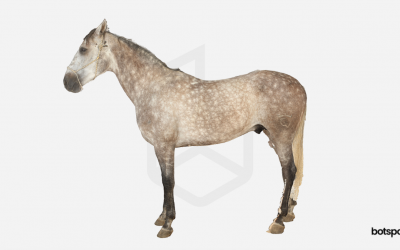MEDREALITY: DIGITIZATION OF ORGANS USING THE BOTSCAN MOMENTUM 3D SCANNING
“COVID-19 has accelerated the digital transformation and created a permanent shift in the way technology is used in the healthcare sector. It is more important than ever to have realistic and precisely scaled 3D medical models at the fingertips of our healthcare providers to improve patient outcomes and save lives.”
– Evan Derman, COO Thyng
REVOLUTION OF THE HEALTHCARE MARKET
Experts estimate that the European market for digital healthcare products and services will reach almost 160 billion euros by 2025. A quarter of this immense sum will be turned over in Germany. The demographic trend will make new treatment methods especially relevant, as an increasingly aging population will require effective and advanced therapeutic approaches. In addition, the prevention of diseases will play a role of ever-growing importance.
In the coming years, telemedicine, blockchain applications, AI diagnostics and the Internet of Things (IoT) will increasingly find their way into the healthcare industry and revolutionize the market as important key technologies. An equally important role will devolve upon 3D visualization. botspot’s American partners at MedReality have dedicated themselves to exactly this area. After the team surrounding Thyng founders Ed LaHood and Evan Derman realized that there is an immense need for true-to-life 3D models of real human organs, they launched their MedReality platform. The innovative startup aims to make the work and training of various healthcare professionals more efficient by making medical image data accessible to everyone who is in need of such data – in 3D.
“We built MedReality because we realized there is an asymmetry between the wonderful imaging data captured in medical facilities and the delivery of that critical patient data to clinicians, surgeons, physicians or patients themselves. Humans are inherently visual learnings and MedReality delivers medical data in a stunning visual format that resonates with the end user.”
– Evan Derman, COO Thyng
VISUALIZATION OF MEDICAL DATA ON A SMARTPHONE
MedReality can be accessed via app, on the smartphone, or via browser. After logging in to the platform, 3D models can be uploaded and projected into reality with the help of the AR function. In addition, it is possible to view them in a VR environment, with special hardware. A wide variety of medical 3D models can already be purchased via the associated marketplace. In addition to these 3D models, MedReality also allows the upload of entire DICOM datasets, which can be viewed either in the browser or via AR/VR. Once uploaded, the DICOM file is converted into a 3D model and stored on the servers of a safe processing partner.
AUTOMATED 3D DIGITIZATION WITH BOTSCAN MOMENTUM
To keep ready the best true-to-life models of organs and other medical specimens in its in- house marketplace, MedReality’s team uses a botscan MOMENTUM, which was optimized for the pathology. With this object scanning solution, the scanning process of an organ takes about two minutes. Thanks to the automated scanning process, the object does not have to be meticulously scanned from every angle while maintaining the same distance, as is usually required with handheld scanners, but simply placed correctly inside the scanner. A special holding system ensures that the shape of the scan object is maintained and that it does not deform too much – an extremely important criterion especially for the digitization of organs with larger masses and unstable shapes.
“Our team has decades of 3D scanning experience between us and we have more 3D scanning hardware in our office than we care to admit. However, the crown jewel of our collection is the BOTSCAN MOMENTUM solution. It has added a level of automation that simply does not exist anywhere else in the market. The MOMENTUM allows our healthcare partners to create a seamless efficient 3D scanning workflow that saves time and money – with photorealistic quality that is superior to previous solutions.”
– Evan Derman, COO Thyng
THE FUTURE OF MEDICAL EDUCATION
Several groups can benefit from the MedReality solution:
The quality of medical education increases when students have access to 3D models of real organs instead of being limited to two-dimensional images or standardized models. Although it is already possible to view models of organs on the computer or via augmented reality, until now these models were usually computer-modeled and therefore merely generic. In contrast to those, 3D scans of real organs can prepare future physicians for anomalies and individual characteristics that they will later have to deal with in their daily clinical routine. For the first time, these essential skills can be partially acquired without having to perform autopsies. In addition, realistic visualizations are helpful for the communication between doctors and patients, in order to clarify facts in explanatory talks, realistically using real 3D models of organs or to visualize the complex course of an upcoming operation more precisely.



